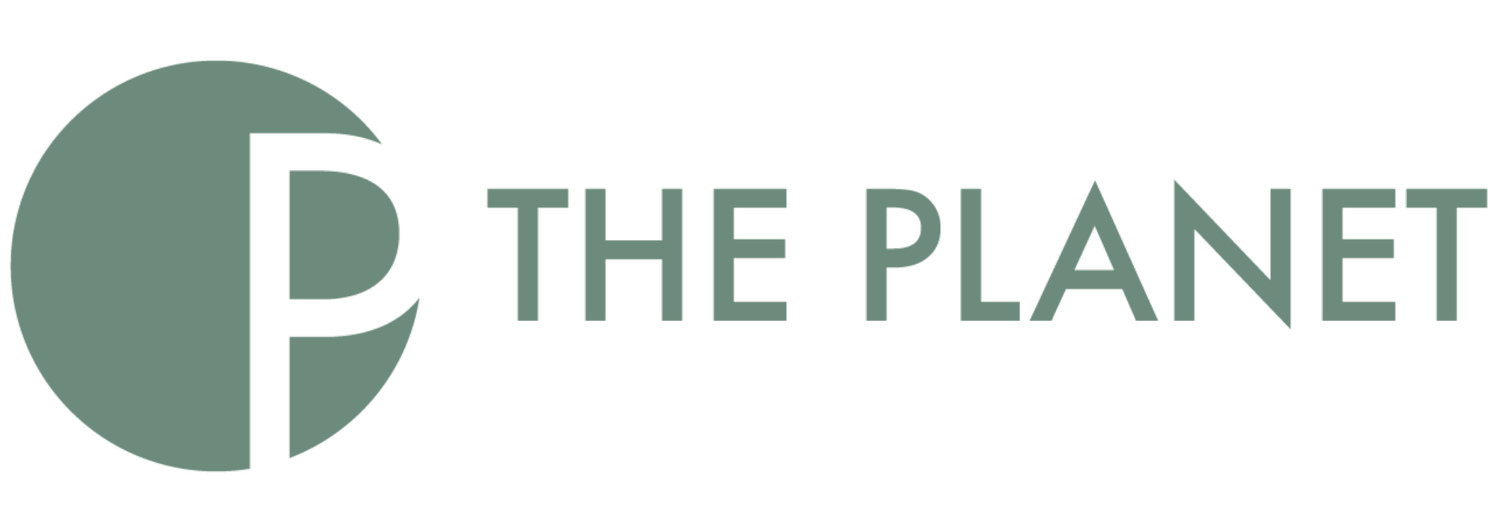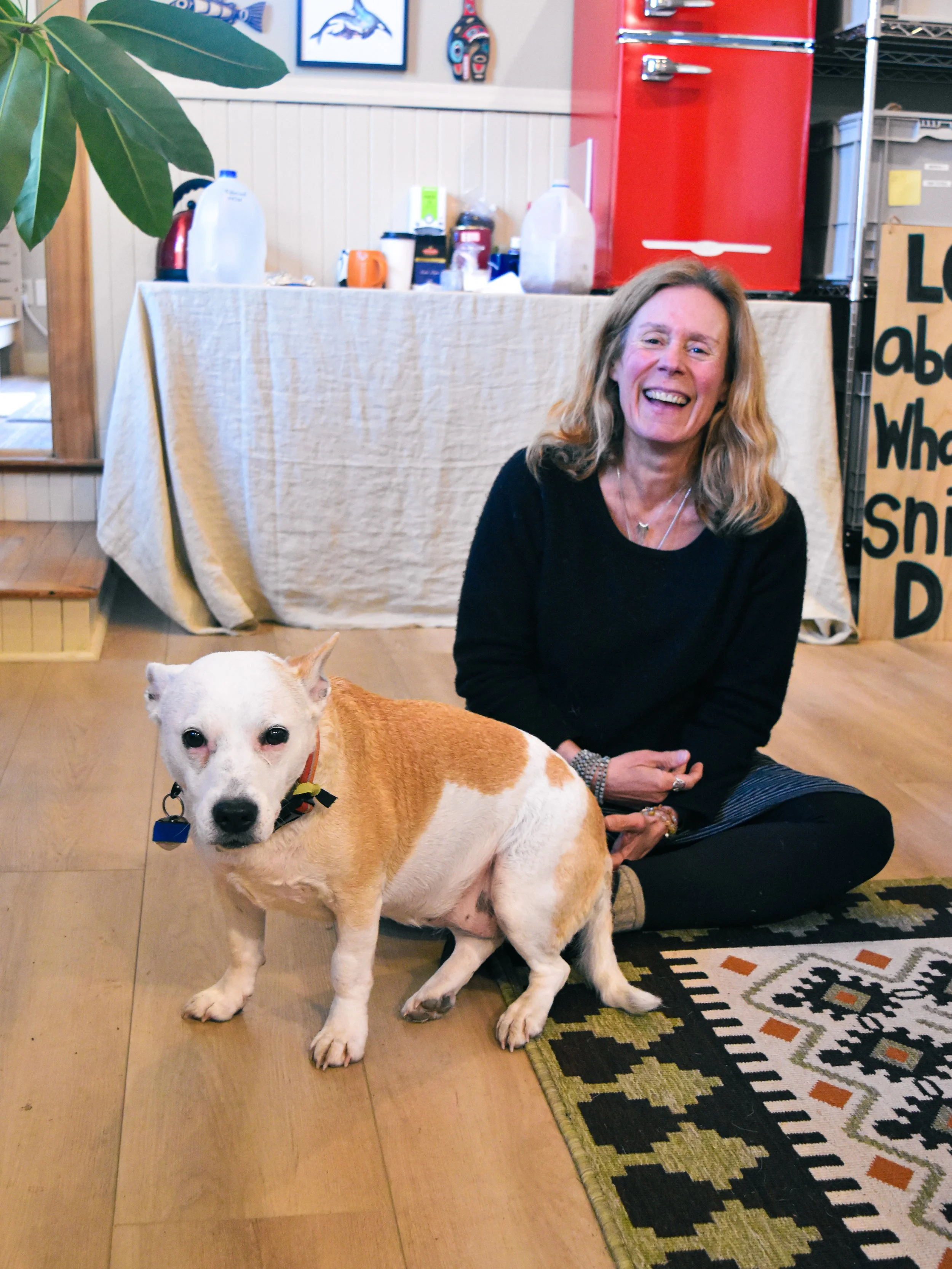A Whale’s Best Friend
Canine contributions to orca recovery
A small dog in the open ocean, ready for an adventure.
Story & Photos by Kaia Olson
July 7, 2025
Editor’s Note: The original version of this article portrayed Deborah Giles as the leading expert on Southern Resident orcas and stated that the captive orca Sk'aliCh'elh-tenaut was held at SeaWorld. Giles is one of many experts on Southern Resident orcas, and Sk'aliCh'elh-tenaut was held at Miami Seaquarium. This article has since been updated to reflect this information, and The Planet apologizes for the error.
Eba stands at the bow of a boat, bundled in a life jacket, her sunglasses shielding her eyes from the glare on the water. A complex web of life lies below the surface, but Eba isn’t distracted by the beautiful turquoise water and rocky shorelines. Her attention is fixed ahead, where a handful of black fins slice through the choppy waves.
She stiffens, nose in the air—she’s caught the scent she’s trained to find: killer whale scat.
Originally from the streets of Sacramento, ten-year-old Eba is a stocky mutt and the unlikely research partner of Deborah Giles, a leading expert on Southern Resident orcas and the Killer Whale Scientist at SeaDoc Society. The pair works in the San Juan Islands to save these endangered whales.
Unlike their mammal-eating relatives, Biggs killer whales, Southern Residents feed exclusively on fish, specializing in Chinook salmon. Three distinct pods—J, K, and L—travel along the Pacific Coast from Monterey Bay to Alaska, but mostly reside in the Salish Sea.
Southern Resident populations have declined rapidly in the last century, with only 74 members left. Every individual is known and named, and close monitoring is essential for conservation.
But keeping tabs on an imperiled species is easier said than done, as many research methods can be invasive and dangerous. That’s where scat collection and analysis come in.
“I always think of it as a goldmine of data,” Giles said.
Eba the orca dog, gearing up for an expedition in search of orca poop.
A fecal sample provides similar health metrics to a blood sample. Researchers can identify individuals and the kinds of fish they’ve been eating through DNA analysis of the scat. They’re also able to examine hormonal levels, determine if a whale is pregnant and how advanced her pregnancy is, and even evaluate their exposure to chemicals and microplastics.
Dogs have long been bred as pets and aides, but in the last few decades, scientists have recognized them as potential research collaborators, too.
Giles’ work is one of many projects that uses a combination of human science and dogs’ noses to investigate the natural world while minimizing impact. Canines have a sophisticated olfactory system, with one study finding that dogs can detect smells between 1,000 and 10,000 times better than humans can.
In 1997, UW biology professor Samuel Wasser founded Conservation Canines, which trains dogs to help investigate environmental problems. The program has expanded, teaching them to identify everything from elephant ivory to banned industrial chemicals.
Regardless of breed, scent detection dogs must have a high play drive. Trainers look for individuals who are motivated by their toy and are persistent in getting it. The training process requires trust and patience between dog and handler, and many companion animals don’t make the cut.
Eba is an exception.
Giles was a boat driver for Wasser’s program when she adopted Eba in 2017. Originally, Giles never considered training her, but after a suggestion from a handler, she began the process. In an almost instant success, Eba found her first scat in 2019 after just two days on the water.
“I never thought Eba would work because she had huge energy, but she was just this little sausage,” Wasser said. “But we got her on the boat and she was phenomenal.”
She’s good at her job off the water, too.
Eba’s affectionate personality and her “unbridled joy” make her a local celebrity and a compelling ambassador for orca research. Support for Giles’ work is inspired by the collaboration of human and dog with the same mission—to save a beloved icon.
“It’s connecting with another species on a really significant level,” Janet Alderton, a community member and donor, said.
Wasser transferred the killer whale research program over to Giles and her nonprofit organization, Wild Orca, in 2021. The nonprofit is now merging with SeaDoc Society and collaborates with the San Diego Zoo Wildlife Alliance to analyze samples.
If orcas are in the area, Eba and Giles get on the water immediately. Using her glasses as a prop, Giles describes driving the vessel slightly downwind and flanking the pod.
When Eba catches a whiff of scat, she comes to attention at the bow of the boat, starting to whine and lick her lips as the boat narrows in on the scent. Once they reach the scat, Giles collects and verifies it, and Eba is rewarded with her toy.
Orca poop is ideally the texture of pancake batter, floating on the surface of the water due to high fat content.
But recent samples have changed in the years since Giles began her research. Both quantity and quality are noticeably less—a sign that, as exclusive fish eaters when salmon populations are failing, the whales aren’t getting enough to eat. Even if Eba can detect the scat sample, the small volume makes it difficult to collect for analysis.
“Our job is so much harder than it used to be,” Giles said.
Faced with a lack of prey, excessive vessel presence, and exposure to toxicants, Southern Residents are struggling. 70 percent of pregnancies are unsuccessful, and calves are at risk even after birth. Mothers’ milk has very high fat content, and if a mother isn’t getting enough to eat, she converts fat stores that may contain toxicants in order to feed her calf.
In her “Tour of Grief,” one mother made international headlines after carrying the body of her baby for 17 days and 1,000 miles.
“The idea that we can just keep moving forward, status quo, is not going to get us to recovery,” Joe Gaydos, wildlife veterinarian and close colleague of Giles, said. “We can do better than we’re doing now. But to do better, we have to do differently.”
Eba and her loving owner in their office.
These scientists join Indigenous peoples who have demanded change for decades. Current fisheries management practices do not allocate any salmon for orcas, allowing the biggest fish to be harvested before they even get a chance to eat. For the Indigenous peoples who have lived with the Southern Residents since time immemorial, letting the whales starve is unacceptable.
Jay Julius, a strategist and former chair of the Lummi Nation, has been fishing alongside the orcas since childhood. He reflected on the parallels between the Southern Residents and the Indigenous nations of the Salish Sea, their history and futures intertwining.
“What’s happening to them is happening to us as well, as Lummi people,” Julius said.
Julius collaborated with Giles in a documentary titled Managed to Extinction, that is currently running in film festivals. The video focuses on the urgency of salmon recovery to protect the ecosystems and cultures that depend on them.
“We need all of these things to exist, in order for our existence to carry on,” Julius said.
Tied to Eba’s collar is a scrap of neoprene from a toy that belonged to Sk'aliCh'elh-tenaut, also known as Tokitae, a captive orca at Miami Seaquarium who died before she could be returned to her home waters of the Salish Sea. The talisman is a reminder of how high the stakes are for the Southern Residents.
“We don’t have the luxury of just doing science for science’s sake…we have a responsibility to put our science into the hands of the public and policymakers,” Giles said.
In collaboration with other scientists in the region, Giles is compiling her research into a database. These electronic medical records will help inform conservation decisions about orcas and guide legislation to protect them.
Eba’s contribution is invaluable. Though the future of the Southern Residents is precarious, she and Giles are dedicating their lives to save them from extinction.
“They aren’t giving up themselves,” Giles said, her voice cracking with emotion, “and so I don’t ever want to give up trying to help them recover.”



